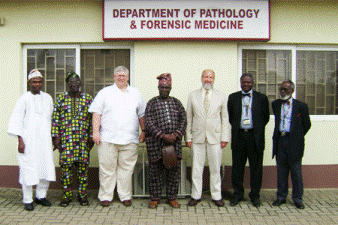Natural Resources, School of

Karl Reinhard Publications
Document Type
Article
Date of this Version
7-2010
Citation
Published in Journal of Archaeological Science 37:7 (July 2010), pp. 1510–1520; doi: 10.1016/j.jas.2010.01.011
Abstract
Ascaris lumbricoides (giant roundworm) and Trichuris trichiura (whipworm) are the most common intestinal parasites found in humans worldwide today and they almost always co-occur. However, we find two distinct patterns in archaeological material. In historical North American and Old World contexts, the association of A. lumbricoides and T. trichiura is similar to the modern epidemiological picture. In contrast, the co-occurrence of A. lumbricoides and T. trichiura eggs in prehistoric South America is rare. For prehistoric contexts, T. trichiura is the most common parasite found in archaeological material. Recently molecular biology techniques pointed to a subdiagnosis of roundworm infection in pre- Columbian South American populations. This is contrary to the modern epidemiological picture in which A. lumbricoides infection is predominant. This is a paradox, especially when one considers the number of eggs laid by female daily, 200,000 and 20,000 thousand per day, for A. lumbricoides and T. trichiura respectively. By reviewing the records of these parasites, this paradox is presented and explanations for the paradox are explored. Taphonomy, prehistoric behavior patterns and medicinal plant use seem to be most relevant to the explanation of the paradox. Nematophagous fungi is a less likely factor creating the near absence of A. lumbricoides eggs in the prehistoric New World.
Included in
Archaeological Anthropology Commons, Ecology and Evolutionary Biology Commons, Environmental Public Health Commons, Other Public Health Commons, Parasitology Commons


Comments
Copyright © 2010 Elsevier Ltd. Used by permission.